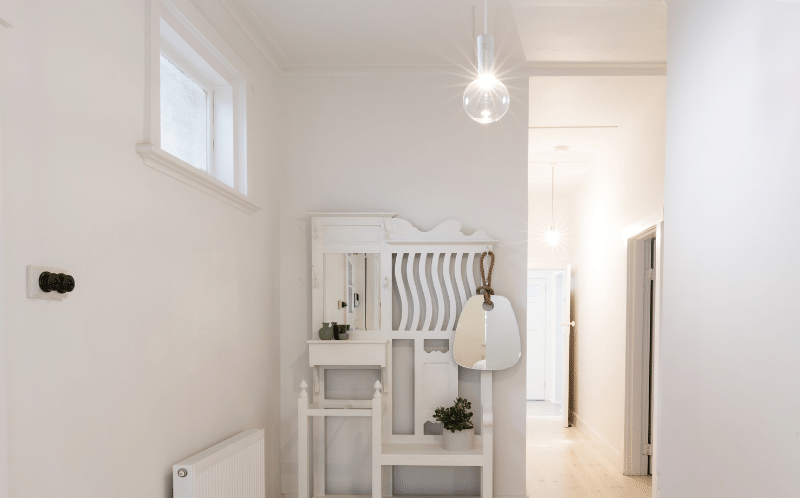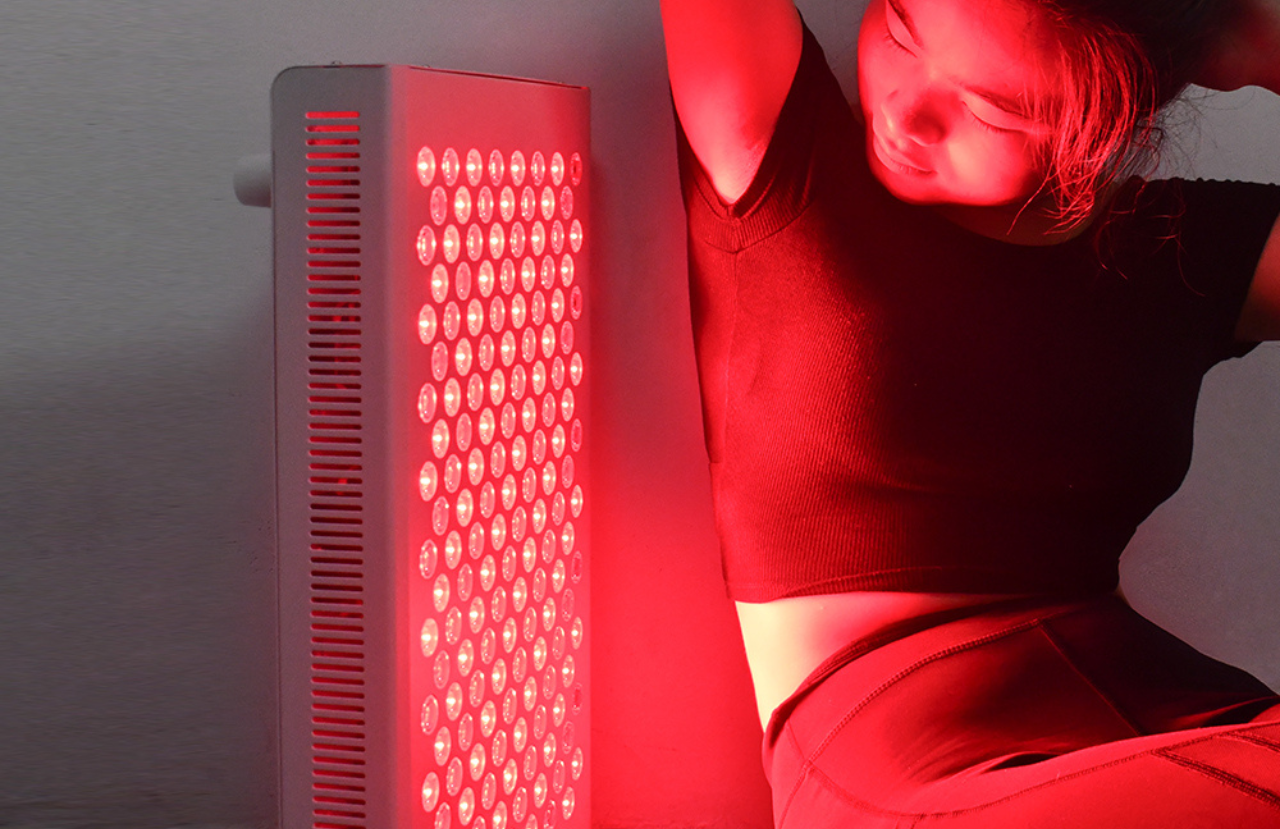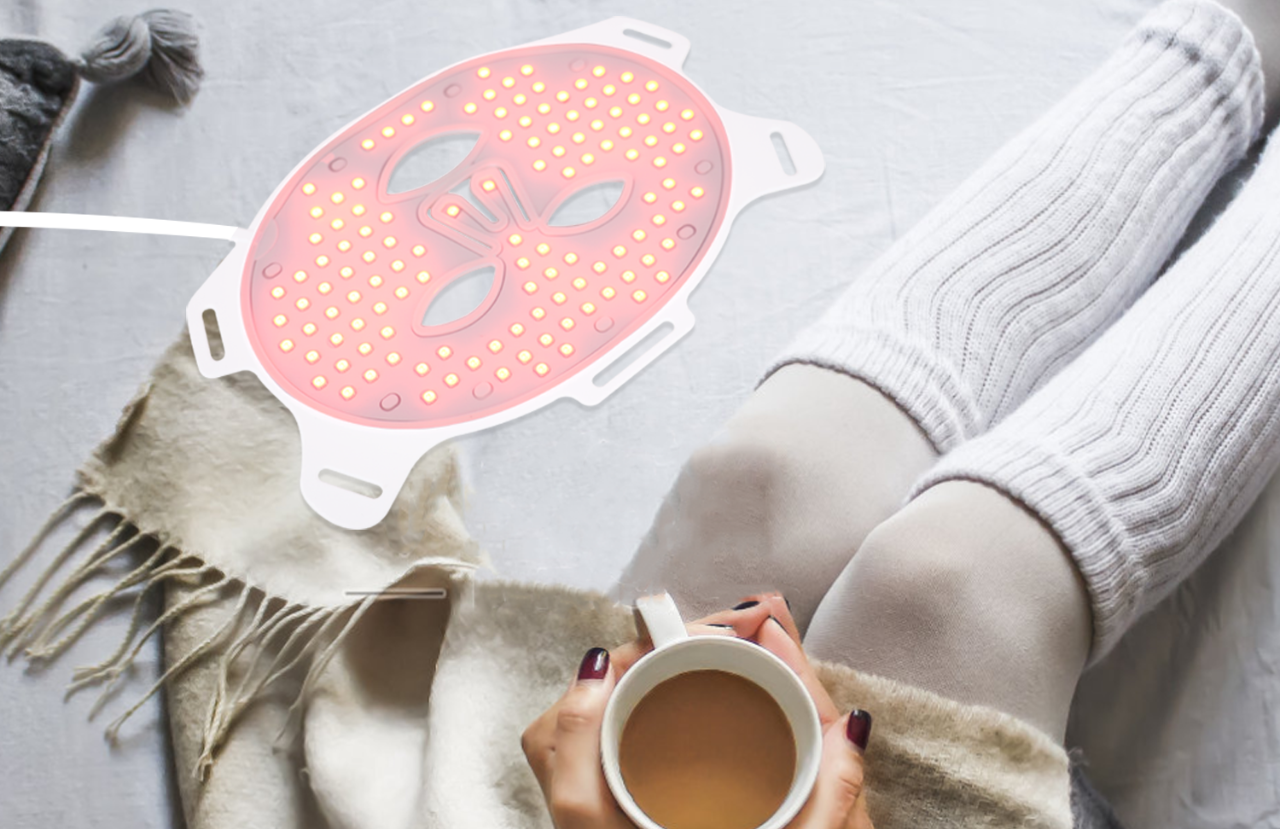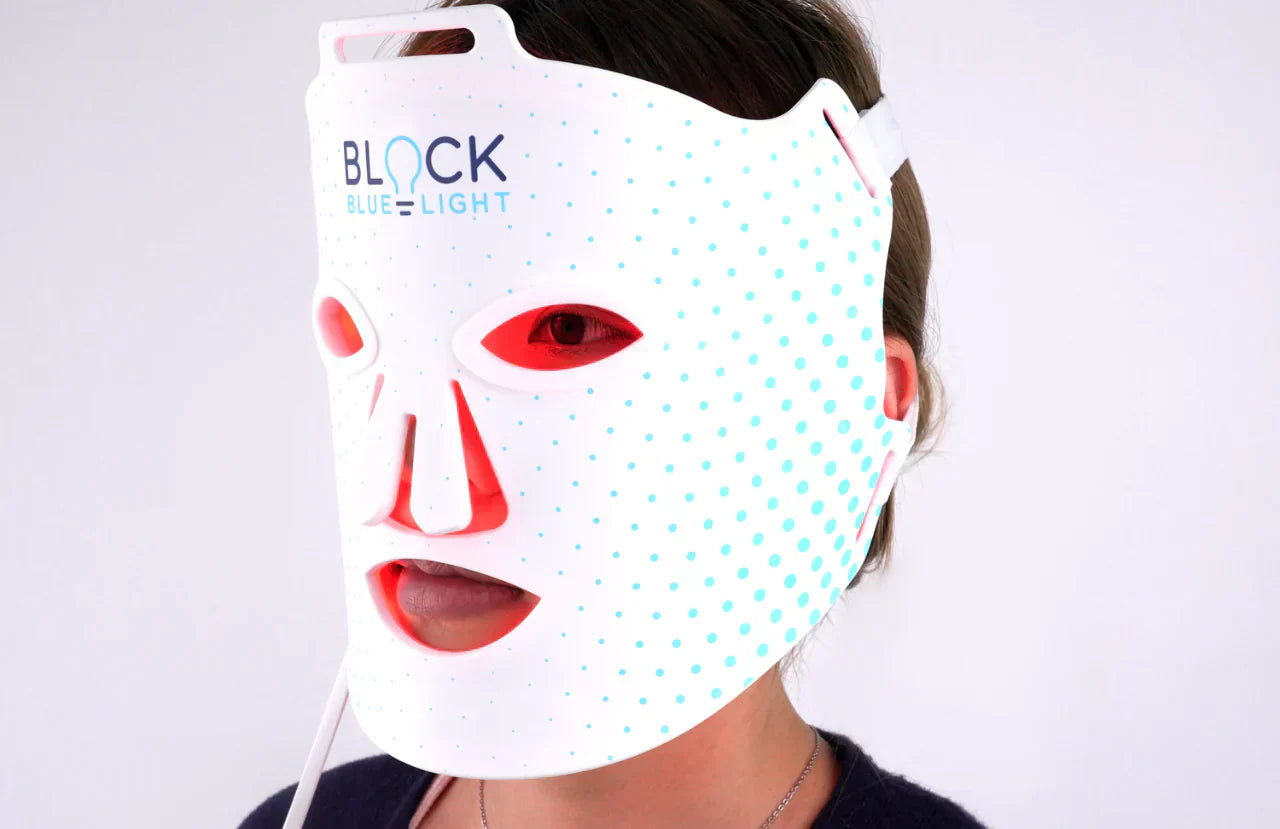Are you wondering how to improve your health and wellness on a deeper level than a good diet and the occasional jog in the park? Us too. Which is why we started delving into the effects of lighting on our wellness.
What is full-spectrum light, why is it good for you, and how can it help you? In this article, we answer it all so that you can learn the basic importance of full-spectrum light and why we need to be adjusting our environment so we can thrive, rather than survive.
What Does Full Spectrum Light Do?
So what is full-spectrum light anyway? And why is everyone talking about it? Full-spectrum light is pretty self-explanatory; it is light that covers all wavelengths of light on the visible and invisible light spectrum.
Light wavelengths go all the way from infrared light to near-ultraviolet, and they aren’t all visible to the human eye. In fact, humans can only see about 0.0035% of the full electromagnetic spectrum. The portion of wavelengths that humans can see is known as ‘visible light’.
Full-spectrum wavelengths cover all aspects of light that are important for plants, humans, and living species. The sun is a renowned source of full-spectrum light. The sun is our most important light source, and its natural daylight rays give life to the world and its ecosystems. Full-spectrum lights, lightbulbs, and lamps efficiently replicate the very important role the sun plays for us in our natural environment.

Are Full Spectrum Lights Good For You?
Full-spectrum lights, lamps, and lightbulbs are really important for good health because they replicate the same visible spectrum as outdoor lighting that comes directly from the sun. The sun provides a superior form of lighting that naturally provides the exact nutrients the earth, animals, humans, and all living species require to survive and thrive. SAD lights are another type of full spectrum light which is a very effective light therapy for depression treatment.
In today’s world, we use a lot of artificial LED (light-emitting diode) lighting to cater to modern lifestyles but unfortunately, they aren’t that good for you. Our bodies are unique masterpieces that have evolved due to our environment, and our internal ecosystems are just as delicate as the ecosystems that we observe out in nature. Just the slightest shift causes a cascade of cause and effect.
Clinical research shows the endless benefits and importance of sunlight to human health.1 There is a growing body of research that digs further into the importance of full-spectrum light that highlights its ability to prevent various types of cancer, diabetes, hypertension, and multiple sclerosis. Not only that — sunlight plays a central role in the regulation of the hormone melatonin which is responsible for the sleep-wake cycle and skin tone.
When the sleep-wake cycle and hormone balance is disturbed it can have shocking effects on your health and wellness. And unfortunately, a growing body of research has proved that LED lighting is a central culprit for disturbing the sun’s natural role in our regulation of light — and the important harmful consequence this has to play on our internal biological systems.
In terms of general wellness and mood, researchers confirm that sunlight is linked to the release of dopamine, serotonin and plays a key role in seasonal affective disorder (SAD) and depression.2, 3 They found that the level of serotonin and dopamine produced by the brain is in direct correlation to the amount of full-spectrum sunlight available and received. Serotonin increased when the exposure to sunlight was increased. So the sun and full-spectrum light play a huge role in mental and emotional wellbeing.
By using full-spectrum lights, lamps, and lightbulbs you can bring the beauty and benefits of natural sunlight into your home to maintain optimal homeostasis. Your body relies on the earth’s rhythm and to stay connected to that rhythm, it needs the triggers of our natural environment such as light from the sun. Of course, it isn’t always possible (or realistic) to live solely by daylight hours in the modern world — which is why we have full-spectrum lighting and blue light blocking products. They allow us to combine our natural biological needs with our current modern desires.
Full Spectrum Light Benefits
What are the tangible benefits of full-spectrum lights, lightbulbs, and lamps, and why do you need them in your home? Let’s delve into the various ways that bringing sunshine into your home can add extra love and light to your life.
-
Can Alleviate Sleep Disorders
Full-spectrum light therapy has been successfully used to treat sleep disorders. Researchers found that full-spectrum light therapy improved morning alertness, decreased the need to sleep during the day, improved and increased sleep time during the night, and improved sleep duration — allowing a longer and deeper night’s rest.4
-
Can Help Improve Mood, Depression And Seasonal Affective Disorder (SAD)
There is a consistent body of academic research that supports light box therapy as an effective natural treatment for seasonal affective disorder.4
-
Painless And Natural
The beautiful thing about using full-spectrum lights, lightbulbs, and lamps is that it is painless, requires no downtime to recover from treatment or use, and naturally fits into your day.
You can successfully use full-spectrum light as part of a light therapy program, or simply replace the standard LED light bulbs in your home to receive the full maximum benefits of the sun inside your home.4
-
Replicates The Sun’s Light Inside Your Home
Bringing the sun’s rays inside your home doesn’t just sound cool — it’s vital for good health. Before the days of houses, our entire lives were regulated by the environment around us, and sunlight is a central aspect of the ecosystem.
Natural sunlight triggers healing, hormone balance, and restoration within the human body — it’s an integral part of our body knowing what to do, and when. An increasing body of research proves that when our ability to stay in contact with these natural regulators in the environment is disrupted it has detrimental effects on human health. Having the wrong light in your home can lead to depression, anxiety, sleep disorders, obesity, cancer, and more.

Which is why at Block Blue Light, we solely focus on improving our modern environment through blue light blocking products, red light therapy, and full-spectrum lighting to ensure that we are as healthy and happy as possible in a quickly changing modern world. We believe in being able to have both. We advocate for nature-aligned science-based health and wellness, whilst also relishing the modern world and all of its juicy treats.
-
Keeps Your Body Regulated
When you are inside your house during the daytime it can be dark, so you will switch on an LED light source. But being disconnected from sunlight and natural light affects your biological regulation. Using full-spectrum light means that you can enjoy being inside your home during the day, whilst also keeping in rhythm with the earth and how it regulates your body. Resulting in better health, optimal wellness, and increased quality of life.
What Are The Advantages Of Lamps And Light Bulbs Marketed As Full Spectrum Lighting?
There are a variety of key benefits to using full-spectrum lighting in place of standard LED light bulbs in your home. The main benefit comes from consciously invented lighting with wellness and health at the forefront of the design.
Standard LED lighting causes health issues that range all the way from headaches, migraines, and seizures due to their flicker. An academic study on office lighting found that the flicker from lighting, even though invisible to the naked eye, caused disruption to the central nervous system and decreased performance in employees.5
Color temperature and the emission of blue light wavelengths are other scientifically proven standard LED and fluorescent lighting health hazards. Many lights that are used around the home, in shops, and offices are white light or bluish-white light on the visible color spectrum. Warm-white light is on the lower end of the color temperature scale, and bluish-white light is on the higher end of the scale.
One study found that cool white light and bluish-white light significantly reduced stage four sleep — which is vital for concentration, cognitive thought, memory, and critical thinking.6 Artificial blue light is responsible for a wide variety of health issues due to its ability to disrupt the circadian rhythm and hormone balance.
An increase of blue light from natural sunlight and full spectrum wavelengths would naturally allow us to become more alert, and wake up due to a decrease in the hormone melatonin. However, the use of standard LED lighting and fluorescent lighting impacts our ability to stay in sync with our natural environment.
Blue light wavelengths are not inherently unhealthy, but being exposed to the right amount of blue light and at the right time is of paramount importance. The issue with artificial blue light coming from LED lighting is that the light bulbs are not generally designed with blue light protection from over-exposure in mind — unless they are specially designed like the light bulbs at Block Blue Light.
Not only that, standard LED lighting doesn’t emit full-spectrum wavelengths, meaning that they don’t mimic the sunlight in its ability to nourish us. Which is an issue when we spend so much time indoors whether it’s at home, in the office, or at the shops.
The United States Environmental Protection Agency reported that on average people spend 90% of their time indoors.7 Which is a rather significant amount of time to lack sun exposure. The most important part to note is that during the day and night, we often use lighting to increase visibility indoors. So carefully created lighting is a priority when poor lighting has such drastic effects on human health.
Full-spectrum lighting is beneficial because it replicates natural sunlight, and brings outdoor light — indoors whilst also balancing all of the visible light colors equally for optimal health and wellness. The best light bulbs to choose for your home are not just ones that are made with a full-spectrum wavelength range — but that also block blue light, and preferably green light also.
Full-spectrum lights are great because they replicate the same color of light as natural sunlight - however, it’s vital to note that the most efficient designs also must contain blue light blocking technology to prevent hormone imbalance and sleep-wake cycle disruption.
Which Full Spectrum Lights Is The Best?
Now that we have looked at all the benefits of using full spectrum lighting in your home and why you would want them over standard LED or fluorescent lights. Lets look at what to look for when purchasing your full spectrum lights.
Color Rendering Index
CRI stands for Color Rendering Index, this ultimately looks at the quality of the light being emitted. This is a value out of 100 used to measure artificial light and how well it can accurately reproduce the colors of the object it illuminates in comparison to natural light.
A true full spectrum light will have a CRI value of at least 99 out of the maximum 100, any lower than this will mean the light does not have a full spectrum of all colours.
Standard LEDs typically have are CRI of 80-90, if you look at the diagram below you will see all of the colours of a ordinary white LED are not balanced and provide a lot more blue and very little yellow orange and red.
If you look at BlockBlueLight's Full Spectrum BioLight, it has a very balanced level of all colours and had a CRI value of >99.

Flicker
Conventional LEDs and fluorescent lights produce high amounts flicker, while it may not be visible to the human eye, the lights are flashing on and off hundreds of times a second, your brain can recognize this flicker even if you can’t, which can then lead to eyestrain, headaches, loss in concentration, and even damage to our eyes! To make sure your full spectrum light is going to be a quality healthy light source to be exposed to it must be completely flicker free.
Day To Night Setting
While full spectrum light is the most optimal light to be exposed to during the day time, it is not the most optimal light to be exposed to at night-time. This is because the level of blue light being emitted from the full spectrum light sends a signal of daytime to your brain, which in turn suppresses the sleep hormone melatonin. For your full spectrum light to be truly the best type of light to use both during the day and at night it needs the ability to switch modes to remove all of the blue light spectrum to become a warm amber light that is 100% blue light free to help support better sleep.
BlockBlueLight has created the very best in full spectrum light technology with the BioLight Full Spectrum Light Bulb.

BioLight is the first biological friendly lighting technology of its kind to appear anywhere in the world. It is completely flicker free, low EMF. The BioLight's true power comes with its 3 different modes it has to provide optimal lighting all day, and all night.
The Dawn to Dusk feature gives you 3 light bulbs in one:
FULL SPECTRUM DAY MODE: Promotes positive mood, increases stable energy and sense of well-being during the day.
MIXED MODE: full spectrum + no blue amber light to create a low blue warm white replicating the same visible spectrum as incandescent lights.
NIGHT MODE: pure amber light that is 100% blue light free to help support better sleep

Conclusion
The body is an intricate masterpiece, and it’s impossible to know all the ways in which you could or should be caring for your body. Block Blue Light does the hard work for you, by taking responsibility and doing all the thinking for you.
By trusting in ethical, reputable, and science-based health and wellness brands you can ensure that you are always at the forefront of the most recent and accurate developments in holistic health for your modern lifestyle.
Have you ever thought about the lighting in your home? Or even the benefits of natural sunlight and its full-spectrum rays? It could be the perfect time to.
- https://pubmed.ncbi.nlm.nih.gov/27876126/
- https://pubmed.ncbi.nlm.nih.gov/12480364/
- https://pubmed.ncbi.nlm.nih.gov/20875835/
- https://www.ncbi.nlm.nih.gov/pmc/articles/PMC3839957/
- https://www.ncbi.nlm.nih.gov/m/pubmed/9557586/
- https://pubmed.ncbi.nlm.nih.gov/15840951/
- https://www.epa.gov/report-environment/indoor-air-quality





